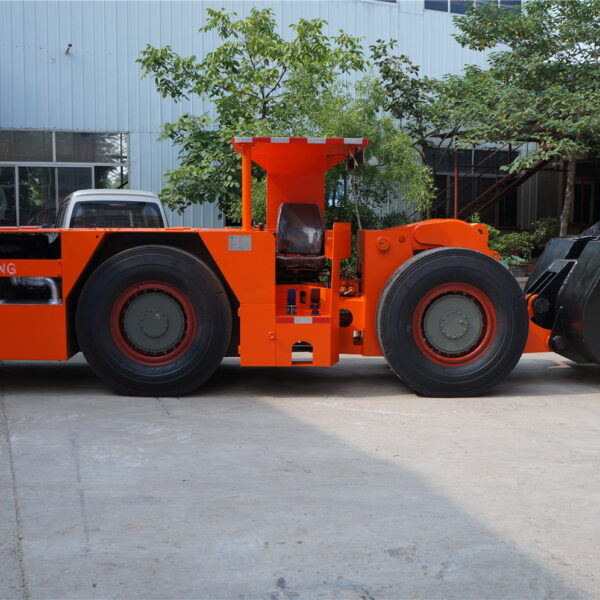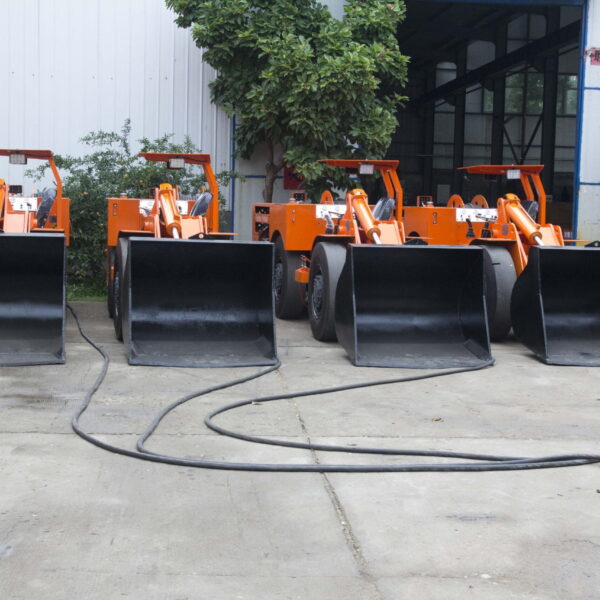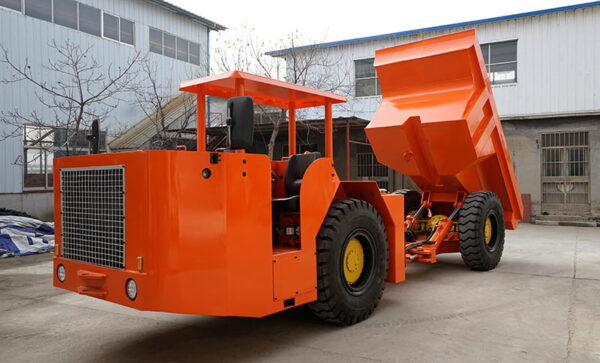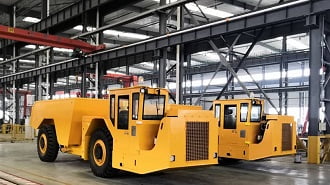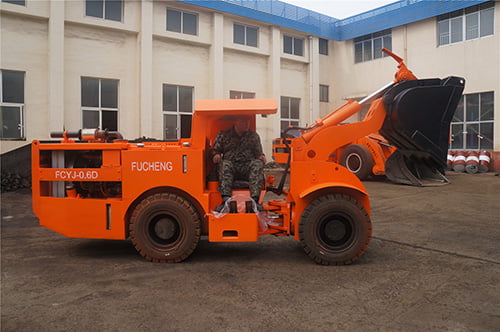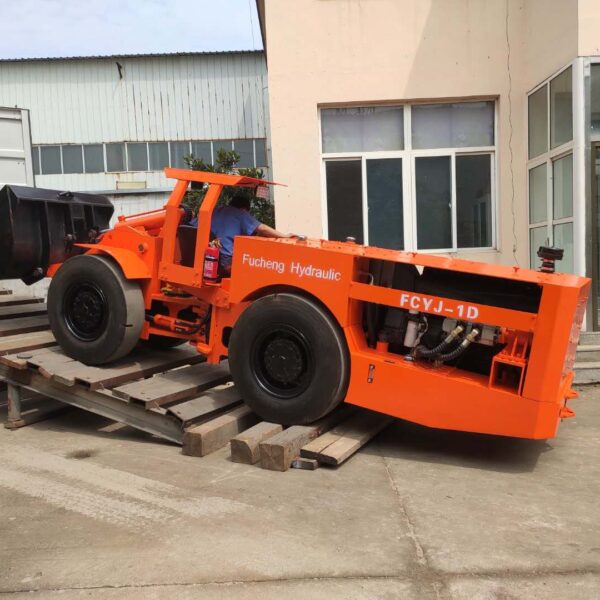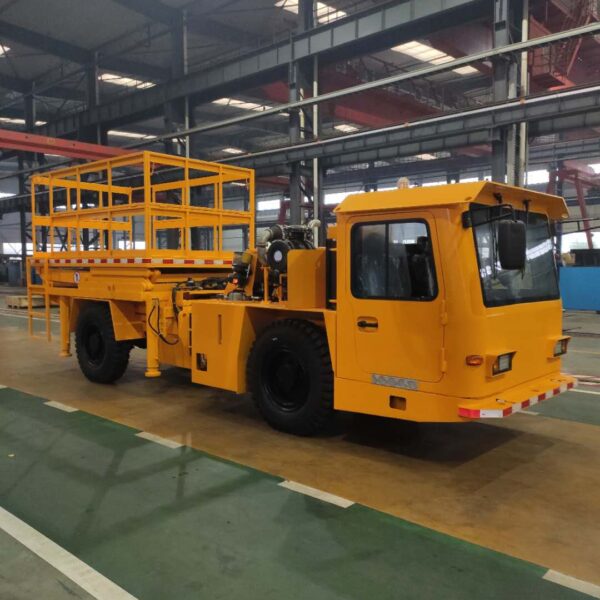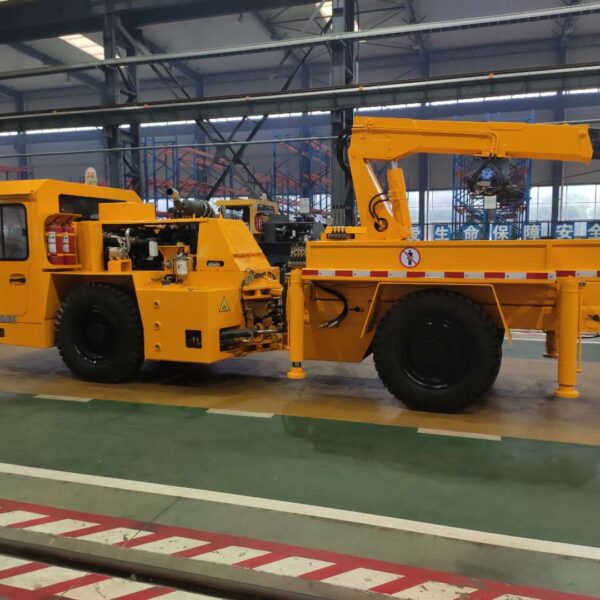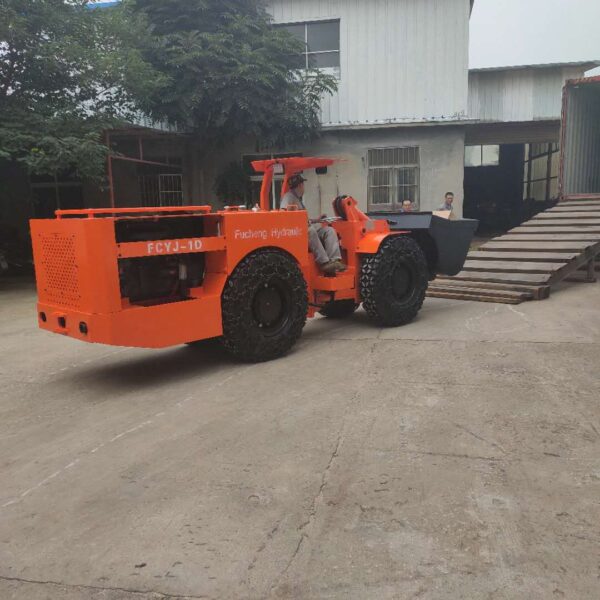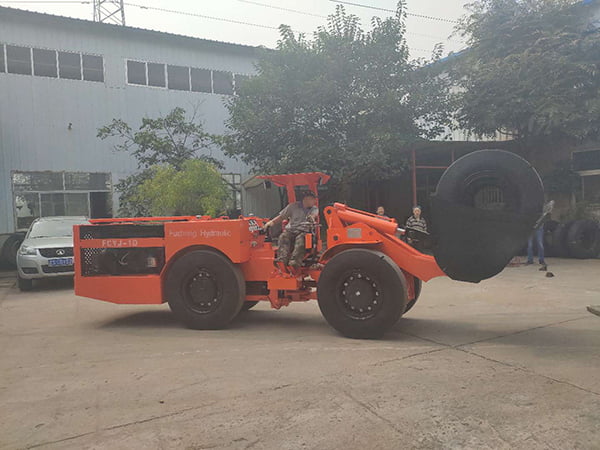El proceso de extracción de recursos valiosos de la tierra se conoce como minería. Los mineros utilizan la tecnología para obtener cualquier recurso que no se pueda cultivar o fabricar artificialmente. La minería es el proceso de extracción de recursos no renovables como los combustibles fósiles, los minerales e incluso el agua. La minería subterránea, la minería de superficie, la minería de placer y la minería in situ son los cuatro tipos principales de minería. Los mineros suelen determinar el tipo de minería en función del tipo y la posición del yacimiento mineral. Cada método minero tiene también otros niveles de seguridad y de impacto ambiental, tanto para las operaciones mineras legítimas. Entonces, ¿cuál es la diferencia entre la minería de superficie y la subterránea? Este artículo mostrará los dos métodos mineros más importantes, la minería subterránea(subsurface mining) y la minería de superficie. Además, aclarará las diferencias entre ambos.
Minería subterránea
Acerca de la definición de minería subterránea, cuando un yacimiento mineral se encuentra a gran distancia bajo la superficie del suelo, los mineros retiran la cantidad específica de residuos (tierra, piedras, partículas de polvo) para descubrir el yacimiento mineral a través de la superficie se conoce como minería subterránea(subsurface mining). En pocas palabras, la excavación de mineral de debajo de la cubierta del suelo es el proceso de minería subterránea. Por ejemplo, El Teniente es la mina subterránea más grande del mundo, Drieftein min, Kusasalethu Gold Mine, Moab Mina de oro Khotsong, mina de cobre-zinc Kidd Creek, mina Lucky Friday, mina de oro LaRonde, etc. Más de 2.400 kilómetros de túneles producen aproximadamente 400.000 toneladas métricas de cobre al año en lo que respecta a El Teniente. A continuación se detallan los tipos de minería subterránea.
Tipos de yacimientos
Los minerales subterráneos, que se encuentran a una distancia considerable bajo la superficie terrestre, son adecuados para la minería subterránea(subsurface mining).. En este caso, los minerales metálicos, como el cobre, el oro, el zinc, etc., son los yacimientos ordinarios que los mineros encuentran bajo tierra. Estos yacimientos se encuentran a una distancia tal que la minería de superficie no puede llegar hasta ellos. Si es así, la minería de superficie requiere mucha inversión para llegar hasta ellos. Por lo tanto, necesitan volver al método de minería subterránea.
Acceso al yacimiento
El acceso a los yacimientos minerales presenta cuatro tipos diferentes de acceso subterráneo. No entraremos en detalles, pero, en resumen, expondremos la definición. En general, los mineros acceden al yacimiento mediante pozos. Este proceso prevalece en la mayoría de los procesos de minería subterránea(subsuperficial). subterránea. Además, existen otros tres procesos: el acceso por el declive, el acceso por los pozos y el acceso al yacimiento.
Acceso al eje: Los pozos son accesos verticales de excavación directos al yacimiento. El acceso vertical es generalmente adyacente a la ubicación del mineral.
Rechazar acceso: Los accesos en declive son en espiral o en declive desde la superficie hasta el yacimiento. Los accesos en declive pueden ser circulares, en forma de flanco.
Acceso Adit: Los adits son accesos horizontales de excavación en el interior de las colinas o montañas.
Acceso al mineral: El acceso directo al yacimiento es el acceso al mineral.
Métodos de extracción
Dependiendo del mineral extraído y de la naturaleza de los yacimientos, existen cinco métodos diferentes de minería subterránea(subsuperficial). Los mineros no trajeron al mundo estos cinco métodos mineros primarios. En función del coste y la eficacia, hicieron todos esos métodos mineros. En este caso, pueden aparecer otros métodos mineros, que serían más baratos y eficaces en el futuro. Pero en el mundo de hoy, estos cinco métodos son populares en la minería subterránea(subsurface mining).
Minería de desmonte y terraplén: El corte de rodajas horizontales de mineral del yacimiento y su relleno con material de desecho de la planta de procesamiento de minerales es popular como método de minería de corte y relleno.
Encogimiento: Cualquier técnica minera en la que el mineral partido se mantiene temporalmente en el rebaje para proporcionar una plataforma de trabajo y proporcionar apoyo temporal a las paredes del rebaje durante la minería activa se conoce como retracción o parada por retracción.
Subnivel agujero largo: El método de minería utilizado para grandes yacimientos con una profundidad pronunciada, una forma regular y unos límites de mineral aceptables, que funciona según el principio de voladura de grandes yacimientos, es famoso como método de minería de barrenos largos de subnivel.
Sala y pilar: La minería de cámaras y pilares es un método de extracción de mineral a través de un plano horizontal, lo que da lugar a conjuntos horizontales de cámaras y pilares.
Espeleología en bloque: La espeleología de bloques es un tipo de minería subterránea de roca dura que consiste en socavar un yacimiento y dejar que se derrumbe bajo su peso. Es un tipo de minería subterránea similar a la minería a cielo abierto.
Ventajas y desventajas
Las ventajas e inconvenientes de la minería subterránea son:
- Este método de extracción tiene impactos de pocos efectos medioambientales(
impacto medioambiental de la minería subterránea), como un terremoto. Además, el clima de la superficie no afecta a la minería subterránea.
- Su alteración superficial es mínima.
- Alta productividad y eficiencia.
- Requiere mayores costes y energía.
- El túnel interior puede ser peligroso tanto por la radiación como por los gases tóxicos.
- Un túnel subterráneo provoca el hundimiento de la superficie.
- Este método de minería necesita más recursos humanos.
Minería de superficie
Minería de superficie(minería subterránea) es un tipo de minería en la que se retira el suelo y la roca que cubren el yacimiento mineral en lugar de la minería subterránea, en la que las piedras suprayacentes se dejan en su lugar. La máquina de minería de superficie(máquinas de minería de superficie) es esencial. El proceso de minería de superficie es muy complicado. El mineral se extrae a través de pozos o túneles. En resumen, la minería de superficie(ground mining) es un método de extracción de minerales cerca de la superficie de la tierra. Mina de cobre en Bingham Canyon (EE.UU.) Bingham Canyon es la mayor mina a cielo abierto del mundo, situada al suroeste de Salt Lake City, en Utah. Además, hay otros ejemplos, como Mina de cobre de Chuquicamata (Chile), mina de cobre Escondida (Chile), mina de oro Muruntau (Uzbekistán), Mina de oro de Fimiston (Australia), etc. son dignas de mención. A continuación se indican los tipos de minería de superficie.
Tipos de yacimientos
El proceso de minería de superficie es muy complicado. La minería de superficie(minería subterránea) es adecuada para grandes yacimientos de mineral de baja ley. Estos yacimientos se encuentran bajo una fina capa de roca o en depósitos aluviales que se encuentran en la arena y en los cauces de los ríos. En concreto, con este método minero, los mineros recuperan arena, grava, piedras, carbón, hierro y otros metales. La máquina de minería de superficie(surface mining machines) es esencial.
Acceso al yacimiento
En primer lugar, los mineros utilizan excavadoras para retirar la sobrecarga en todos los métodos de minería de superficie(minería subterránea). superficiales. A continuación, el mineral se extrae con excavadoras de rueda de cangilones y palas cargadoras y se carga en camiones de transporte. Cuando los mineros agotan el yacimiento, rellenan el cráter con sobrecarga y, por último, replantan el terreno con vegetación autóctona. La máquina minera de superficie es esencial.
Métodos de minería de superficie
El proceso de minería de superficie es muy complicado. Hay cinco métodos de minería de superficie practicados recientemente por empresas mineras populares. No vamos a entrar en detalles. Los expondremos para abreviar. Pero lo haremos fácil para que usted pueda entender correctamente.
Minería a cielo abierto: La minería a cielo abierto consiste en explotar un tema lineal retirando primero una larga franja de suelo y roca suprayacente. La sobrecarga. Es famosa por la extracción de carbón, lignito y lignito pardo. La minería a cielo abierto sólo es práctica cuando los mineros excavan el yacimiento relativamente cerca de la superficie. Existen dos formas de minería a cielo abierto: la minería de superficie y la minería de contorno. La máquina Surface Miner es esencial.
Minería a cielo abierto: La minería a cielo abierto (Opencast) es un método de extracción de rocas o minerales del suelo mediante su extracción en un pozo a cielo abierto, también conocido como prestadero. La minería a cielo abierto es la solución más económica para una empresa. Pero uno de los inconvenientes más importantes de la minería a cielo abierto es que es el sector minero más peligroso del mundo industrial. ¿Por qué? Porque provoca efectos agudos en la salud de los mineros y, al mismo tiempo, daños en el terreno ecológico.
Canteras: La explotación de canteras es el proceso de extracción de rocas, arena, grava y otros minerales del suelo para utilizarlos en la fabricación de materiales de construcción u otros productos. Por consiguiente, una cantera es cualquier excavación en la superficie terrestre de la que se extraen minerales.
Extracción de la cima de una montaña: La minería de remoción en la cima de montañas -MTR (mountaintop mining-MTM) es un tipo de minería de superficie en la cima o cresta de una montaña. Los filones de carbón se extraen de una montaña retirando la tierra que se encuentra por encima de los filones, conocida como sobrecarga. Este método es más seguro que la minería subterránea, ya que se accede a los filones de carbón desde arriba y no desde el subsuelo.
Dragado: Dragado es un término utilizado para describir la extracción. El dragado es el proceso de utilizar equipos flotantes para excavar un yacimiento bajo el agua. Según el método de transporte del material, los sistemas de dragado se clasifican en mecánicos o hidráulicos.
Ventajas y desventajas
Al igual que la minería subterránea, la minería de superficie también tiene algunas ventajas e inconvenientes. Los más comunes son:
- La mayoría de las minas de superficie se recuperan rápidamente. Alrededor del 95 - 100% de las minas se recuperan una vez terminada la extracción.
- No hay obstáculos para utilizar las máquinas. Los mineros tienen libertad para manejar máquinas pesadas.
- La minería de superficie es más barata que la subterránea.
- Tampoco requiere más recursos humanos que la minería subterránea.
- La minería de superficie ocupa gran parte de las tierras cultivables. Así, se producen daños ecológicos masivos.
- Las máquinas explosivas y pesadas provocan contaminación acústica.
¿Cuáles son sus diferencias?
Hemos conocido la breve descripción de ambas explotaciones y sus diferentes métodos. Tal vez, ahora es difícil diferenciar las diferencias entre ellos. Por lo tanto, le hemos hecho una fabulosa tabla de diferencias entre la minería subterránea y la minería de superficie para ayudarle mucho a entender con claridad.
| Contenido | Minería subterránea | Minería de superficie |
| Tipo | Una mina subterránea necesita túneles a través de la tierra bajo la superficie terrestre. | La minería de superficie está abierta bajo el cielo. |
| Complejidad | Acceso al yacimiento más peligroso y complejo | Mucho más fácil para los mineros acceder a los materiales |
| Riesgos | Riesgoso y peligroso llegar al mineral subterráneo | Menos riesgo que la minería subterránea de derrumbe de la mina |
| Ley del mineral | Minerales de alta ley | Minerales de baja ley |
| Labores | Se necesita más mano de obra para explotar los túneles y las minas | Requieren menos mano de obra que la minería subterránea. |
| Coste | Rentable y eficaz | Rentable |
| Productividad | De 500 a 800 toneladas diarias | De 5000 a 100000 toneladas diarias |
| La vida en la mina | A > 100 años | De 10 a 25 años, rara vez más. |
Resumen
En general, ¿cuál es la diferencia entre la minería de superficie y la subterránea? La minería de superficie es mejor. Pero si los mineros no tienen otra opción, deben elegir los métodos de minería subterránea. Teniendo en cuenta todos los factores, tanto económicos como medioambientales, la empresa decidirá cuál elegir. Ambos métodos de minería son rentables, pero la minería de superficie es mejor que la subterránea para obtener beneficios.
Sin embargo, esperamos haber podido aclarar todos estos contenidos lo suficiente como para entender ambos métodos de minería. Y también esperamos que este artículo haga que su investigación sea más fácil que antes.


